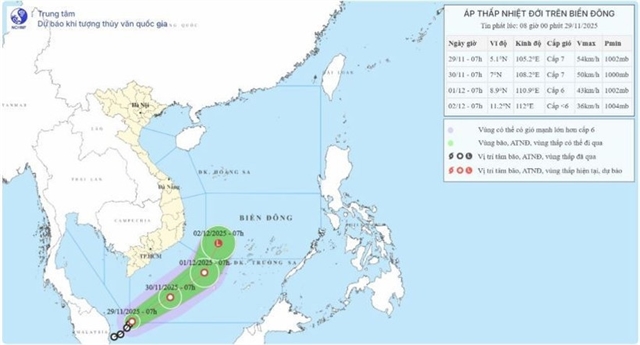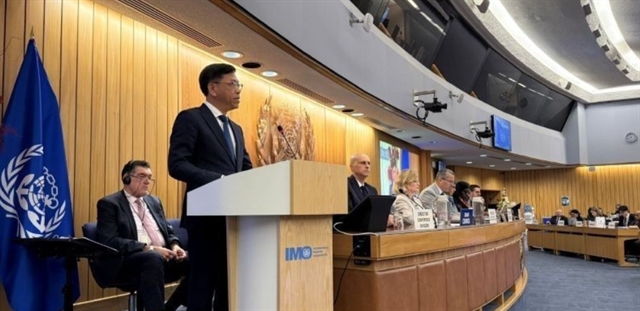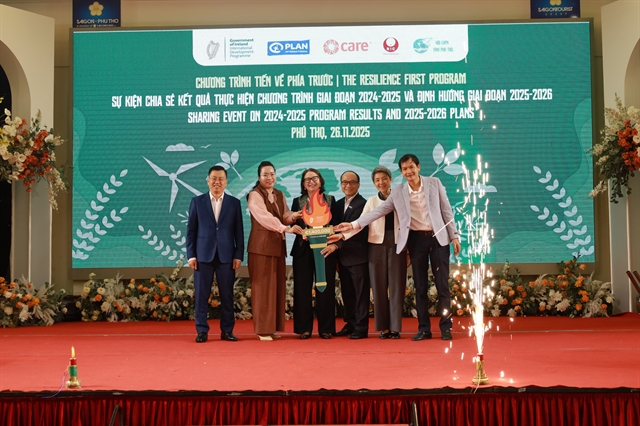 Economy
Economy

 |
| A press conference was held by the General Statistics Office (GSO) on Wednesday. Việt Nam’s gross domestic product (GDP) expanded by 3.32 per cent in the first quarter of 2023. — VNS Photo Linh Anh |
HÀ NỘI — Việt Nam’s gross domestic product (GDP) expanded 3.32 per cent in the first quarter of 2023, the General Statistics Office (GSO) said yesterday.
The expansion is nearly the lowest in 13 years, with Q1 of 2020, which recorded growth of 3.21 per cent.
Speaking at a press conference, officials from the GSO said that the agro-forestry-fishery sector expanded by 2.52 per cent and contributed 8.85 per cent to the GDP growth.
The industry and construction sector contracted by 0.4 per cent, leading to a 4.76 per cent decline in the growth, and the service sector increased by 6.79 per cent to contribute to 95.91 per cent of the overall expansion.
In the agro-forestry-fishery sector, agriculture saw a year-on-year increase of 2.43 per cent in added value, forestry 3.66 per cent, and fisheries 2.68 per cent.
The added value of the industrial sector dropped 0.82 per cent in Q1, the sharpest fall in the first three months of the year since 2011, while that of construction sector increased 1.95 per cent, only higher than the 0.28 per cent and 1.41 per cent recorded in Q1 of 2011 and 2012.
The service sector has clearly shown recovery as a result of consumption stimulation policies, the economic reopening since March 15 last year, and overseas tourism promotion, GSO General Director Nguyễn Thị Hương said.
Between January and March, the agro-forestry-fishery sector made up 11.66 per cent of the economy, industry and construction 35.47 per cent, the service sector 43.65 per cent, and taxes on goods (excluding subsidies) 9.22 per cent.
Among the 63 provinces and centrally-run cities, 58 posted growth in the gross regional domestic product (GRDP), while five saw declines, the GSO noted.
Hương held that amid global economic uncertainties, the positive socio-economic results in Q1 have proved the effectiveness of management and governance policies of the Government, ministries, sectors, and localities.
CPI up 4.18 per cent in Q1
The Consumer Price Index (CPI) in the first quarter of 2023 posted a year-on-year rise of 4.18 per cent.
GSO said CPI in March decreased by 0.23 per cent month-on-month, up 0.74 per cent against December 2022 and up 3.35 per cent compared to the same period last year.
GSO General Director Hương attributed the decrease in CPI in March to the prices of food dropping due to abundant supply and the continuous declines in domestic petrol prices in tandem with world fuel prices. Five of the 11 groups of commodities and services saw prices increase while six decreased.
Hương attributed the increase in CPI in the first quarter to the rise in prices of housing and construction materials in the first quarter. The prices were up by 7.17 per cent over the same period last year, pushing CPI up by 1.35 percentage points.
Prices of food items in Q1 increased by 4.41 per cent, mainly due to increased consumer demand during the Lunar New Year, causing CPI to increase by 0.94 percentage points.
Education fees increased by 10.13 per cent because some localities have increased tuition fees again after exempting or reducing tuition fees in the 2021-22 school year to support people during the COVID-19 pandemic, taking CPI up by 0.62 percentage points.
Culture, entertainment and tourism groups increased by 4.9 per cent due to the lifted control over the COVID-19 pandemic and the increasing demand for entertainment and tourism among the people, especially during the Lunar New Year, pushing CPI by 0.22 percentage points.
The price of electricity for domestic use increased by 2.71 per cent, mainly due to the increase in electricity demand during the Lunar New Year, which caused CPI to increase by 0.09 percentage points.
In addition to the reasons for the increase in CPI, there are several reasons for the decrease in CPI in the first quarter, which included the drop in domestic petrol prices, down by 11.09 per cent compared to the same period last year, reducing the overall CPI by 0.4 percentage points.
Domestic gas price decreased by 1.81 per cent, in line with world prices, making CPI down by 0.03 percentage points. Prices of postal and telecommunications decreased by 0.26 per cent due to the decrease in the prices of old-generation phones, causing CPI to decrease by 0.01 percentage points. — VNS




